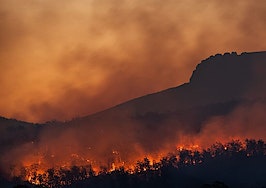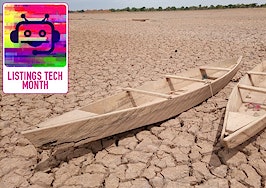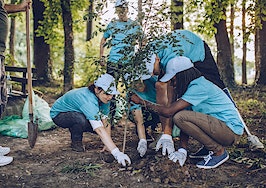Climate risk data nonprofit First Street Foundation has teamed up with wildfire modeling group Pyregence Consortium to create a climate-adjusted, property-specific wildfire risk model, First Street announced on Monday.
The model will also be built with the assistance of environmental think tank Spatial Informatics Group, fire modeling and investigations company Reax Engineering, environmental research and analytics firm Eagle Rock Analytics, and ecological modeling company Apex Resource Management Solutions.
To date, First Street has largely focused its research on flood risk, making its data available to the public as of January 2020. The announcement about the new model comes as wildfires have ravaged the West this summer, recently decimating the Gold Rush-era town of Greenville, California.
The only nationwide online wildfire community risk resource currently available to the public is Wildfire Risk to Communities, a website developed by the USDA Forest Service and its partners. The website helps elucidate wildfire risk by state, region or county, but does not break risk down to an individual property, nor does it adjust risk based on recent fires or climate change, both data gaps that First Street and Pyregence aim to fill.

Matthew Eby
“Federal, state, and local governments and agencies at every level have struggled to inform American homeowners at the property level about the growing risk of wildfire as the risk of wildfire worsens year after year,” Matthew Eby, founder and executive director of First Street Foundation, said in a statement. “Pyregence has built a world leading wildfire model which, combined with First Street’s data modeling capabilities, will vastly expand our ability to arm homeowners with crucial information about their wildfire risk, to help them protect their homes, investments, and lives.”
Through the collaboration, teams of data scientists and modelers will be able to provide an analysis of how various factors will impact a property’s wildfire risk over the next 30 years, giving property owners better insight into their home’s future risk for wildfire.
Expenses that result from wildfires have grown more quickly than expenses associated with any other climate hazard since 1990, according to First Street. Those costs have increased from about $1 billion per year in the 1990s to about $16.6 billion per year as of 2020.
 “As wildfires grow more frequent and more severe with each passing year, the need to educate, inform, and prepare homeowners of their risk of experiencing a disaster has only grown,” Dr. David Saah of the Pyregence Consortium, who is also a professor at the University of San Francisco, said in a statement. “Working with First Street Foundation allows us to leverage their modeling and communications expertise to vastly expand our ability to inform Americans of the wildfire risk posed by a changing climate.”
“As wildfires grow more frequent and more severe with each passing year, the need to educate, inform, and prepare homeowners of their risk of experiencing a disaster has only grown,” Dr. David Saah of the Pyregence Consortium, who is also a professor at the University of San Francisco, said in a statement. “Working with First Street Foundation allows us to leverage their modeling and communications expertise to vastly expand our ability to inform Americans of the wildfire risk posed by a changing climate.”
Work on the model is still underway at this point, and the groups are planning to launch it in tandem with a national report on the impact of wildfires sometime mid-year in 2022.






